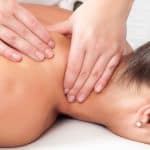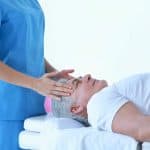Massage therapy’s gradual acceptance into mainstream medicine has brought an increased responsibility to its practitioners. This responsibility is being met by states, municipalities and professional organizations that assure proficiency and ethics with massage therapy regulation. Despite this need, the requirements for practicing massage vary dramatically across the United States.
Although the exact numbers are unknown, the state with one of the largest concentrations of bodyworkers also has one of the least uniform standards for massage therapists (MTs) in this country. This lack of regulation permits those with little education to practice and inhibits the reputation of the entire massage profession. Fortunately, newly signed legislation has the potential to put massage’s questionability in the past.
Recognition and Rights
Massage therapy is being increasingly recognized for its healing potential. Due in large part to research being conducted according to the scientific method and then being published in medically respected journals, massage therapy is finally gaining universal acknowledgement for its therapeutic benefits.
Prospective clients have a right to expect that a massage therapist has the qualifications needed to practice effectively and safely. Thus, legal recognition of the practice of massage therapy and clearly stated requirements to practice are essential for promoting the profession and protecting the health and safety of the general public. A majority of U.S. states understand the gravity of this responsibility to its citizens and have enacted state boards and licensure requirements that massage therapists are held accountable to.
How Many Massage Therapists?
Although there is no reliable data on the number of MTs legally practicing in California, analysts suspect this state to have the greatest proportion of practitioners. Regardless of which source looked upon, California has the greatest number of MTs in any of the states.
- While self-employed MTs are not included in their estimates, the U.S. Department of Labor’s Occupational Employment Statistics from May 2007 recorded California as having the highest number of employed massage practitioners in the country. The four states with the greatest concentration of employed MTs were: California with 7,240, Florida with 4,150, Texas with 3,120 and New York with 2,330. Again, this data does not included self-employment – the most common way MTs earn a living.
- Of these four states, all but California have state regulated massage therapy boards. According to these boards, the actual number of licensed MTs is as follows: Florida with 28,000, Texas with 26,000 and New York with 15,000. By extrapolating these statistics, California likely has over 30,000 practicing massage therapists.
How Much Education?
The states with massage therapy boards are leading the advancement of this profession into the future. Among other responsibilities, these boards mandate a certain level of education to assure the public that their practitioners know enough to safely and competently practice this healing modality. Unfortunately, California’s lack of a massage therapy board has put a drag on the profession. Of the states with the most MTs who have enacted legislation, the following number of hours is required to be completed in an approved certified massage therapy program:
- Florida – 500 hours
- Texas – 500 hours
- New York – 1,000 hours
Massage therapy is the largest healthcare profession in California without consistent statewide regulation. The profession is currently controlled by numerous county and city laws and, in some cities, there are no requirements at all. However, Governor Schwarzenegger changed this dynamic by signing California Senate Bill 731 into law on September 27, 2008. This legislation poises California to unify and improve its massage therapy standards. Some highlights of Bill 731 include:
- Definitions of what titles MTs may use
- Forming a Massage Therapy Organization (MTO) that will oversee statewide certification of MTs
- Two tiers of certification: Massage Practitioner requiring 250 hours of education from an approved school and Massage Therapist requiring 500 hours of education from an approved school
- The intention of the MTO is to accept applications and begin issuing certificates in September of 2009
Medical professionals’ understanding that the human body can benefit so much from massage therapy is cause for celebration. However, this realization places an urgent demand on bodyworkers to endure adequate training. Now that the state with the largest number of practicing MTs has begun a uniform licensing process, the profession can emerge from any doubtfulness of massage’s capabilities. Despite the allowance of Bill 731 for a massage practitioner to have half the education of a massage therapist, California is at least finally on the right track.
References:
http://data.bls.gov/oes/datatype.do, Occupational Employment Statistics: Massage Therapy, Retrieved November 18, 2008, US Department of Labor, 2008.
http://www.amtamassage.org/government/mt_regulations.html, Why We Need Massage Therapy Regulations, Retrieved November 17, 2008, American Massage Therapy Association, 2008.
http://www.futurehealth.ucsf.edu/pdf_files/massage_therapists.pdf, Massage Therapists in California, Tina McRee, Retrieved November 20, 2008, University of California, San Francisco, The Center for the Health Professions, September 2003.
http://www.massagemag.com/News/massage-news.php?id=4313&catid=massage-therapy-title-act-sb731-signed-into-california-law&title=, Massage Therapy Title Act, SB731 Signed Into California Law, Retrieved November 20, 2008, Massage Magazine, October 2008.
http://www.massagemag.com/Resources/massage-laws-legislation.php, Massage Laws and Regulation, Retrieved November 20, 2008, Massage Magazine, Inc., 2008.
http://www.massagetoday.com/mpacms/mt/article.php?id=13882&MERCURYSID=da9a0347fc9f974ba80c58f56b09b37c, Certification in California, Dixie Wall, Retrieved November 17, 2008, Massage Today, November 2008.
http://www.mayoclinic.com/health/massage/SA00082, Massage: A relaxing method to relieve stress and pain, Retrieved November 20, 2008, Mayo Foundation for Medical Education and Research, 2008.
http://www.ncbtmb.org/about_faq.php#6, Frequently Asked Questions, Retrieved November 19, 2008, National Certification Board for Therapeutic Massage and Bodywork, 2008.
http://www.op.nysed.gov/article155.htm, Education Law: Article 155, Massage Therapy, Retrieved November 20, 2008, Office of the Professions, New York State Education Department, 2008.
http://www.sfdph.org/dph/EH/Massage/default.asp, Massage Licensing Program, Retrieved November 18, 2008, San Francisco Department of Public Health, 2008.
Michael De La Cruz, Program Specialist, Perfusionist Advisory Committee
DSHS Professional Licensing & Certification Unit – MC 19, Massage Therapists in Texas, Personal email, November 20, 2008.















